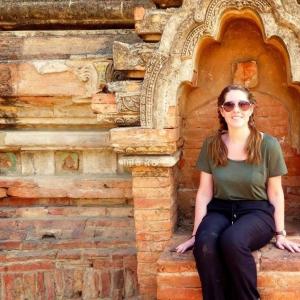Highlights of Namibia
I first visited Namibia 13 years ago and have hugely fond memories. It was a trip across southern Africa that would be pivotal to my increasing wanderlust and ultimately to working in the travel industry. I was excited to return and was not disappointed!
Our group tour covered a lot of ground and during the two weeks, we visited both the well-known highlights of the country, as well as lesser-visited areas. In a country as vast and diverse as Namibia, there truly was something for everyone and below are a few of my key highlights from our visit.
Wildlife spotting
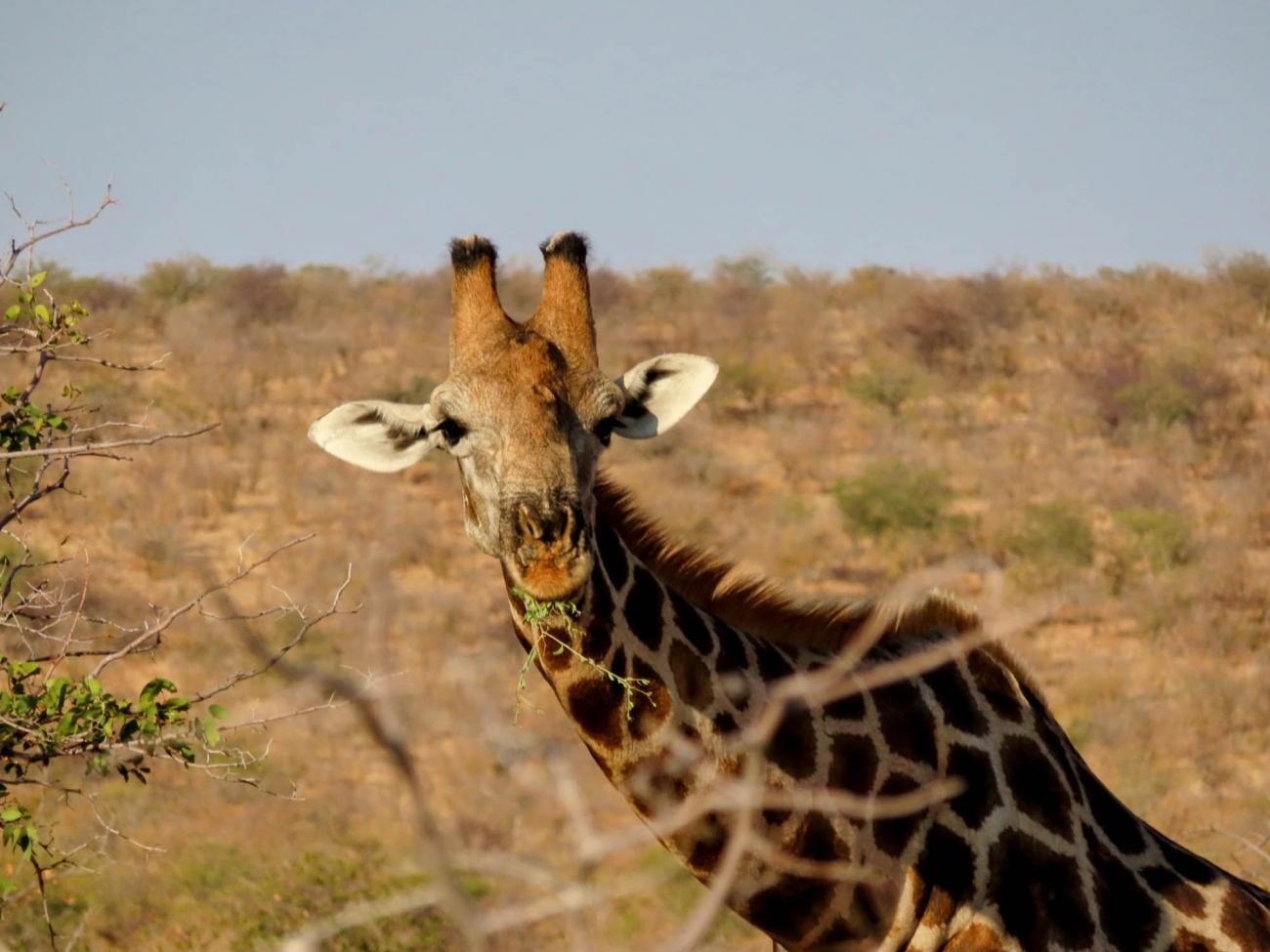
No trip to Namibia would be complete without a visit to Etosha National Park. Meaning ‘‘great white place” it’s not difficult to see why when we drive out onto the edge of the huge salt pan, which at around 1900 sq miles, dominates much of the landscape and covers around a quarter of the park.
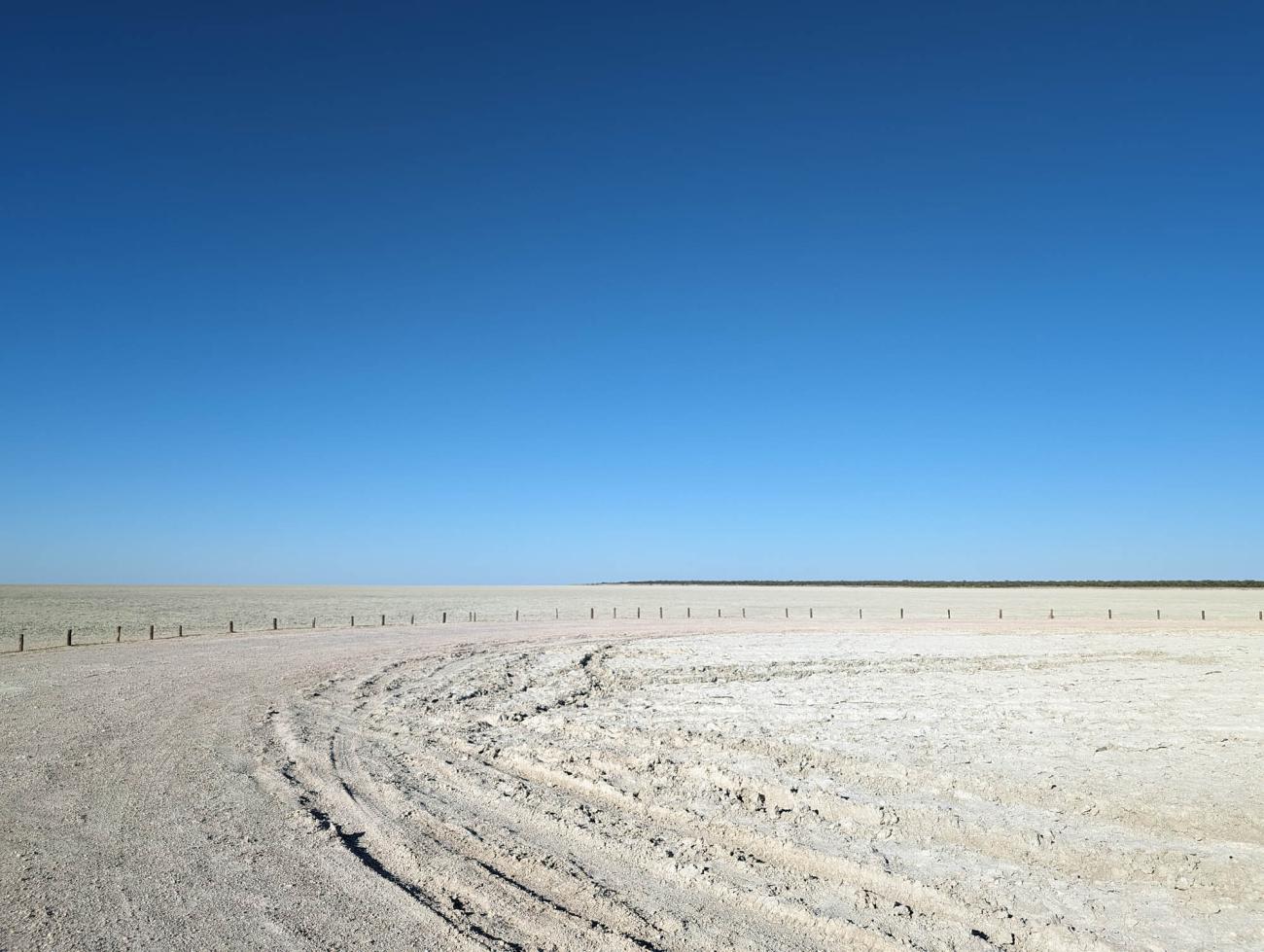
The majority of Etosha is arid and sparse, making it easier to see wildlife. We take part in three game drives in jeeps during our time here, along with the drives between accommodations in our main tour vehicle, and get to see animals including hyena, elephant, giraffe, kudu, zebra, hartebeest, springbok and jackal. Many sightings were during visits to some of the watering holes which are dotted about the park and include both naturally occurring as well as pumped holes to encourage wildlife and allow for management and control of animal and vegetation density within the park.
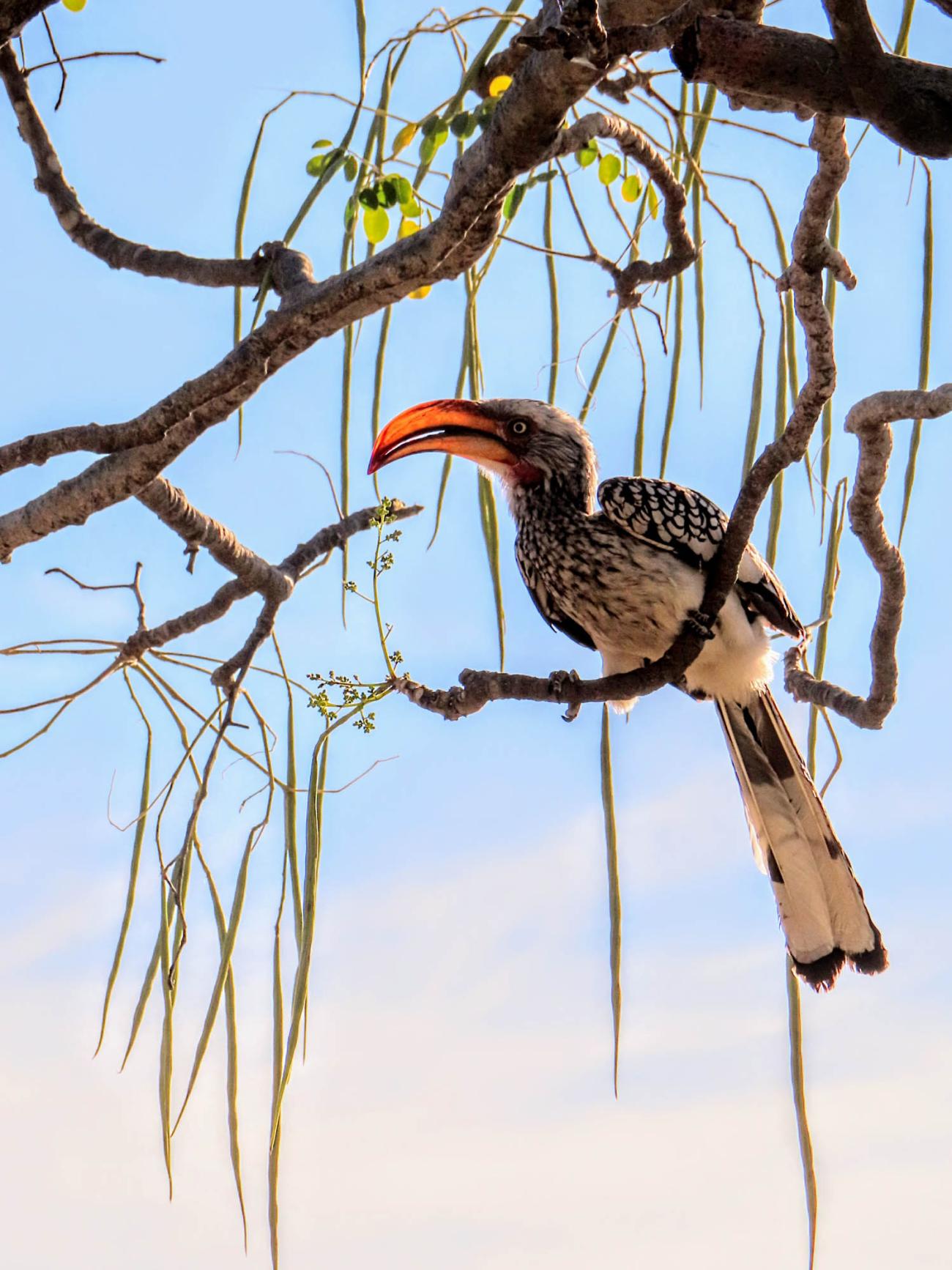
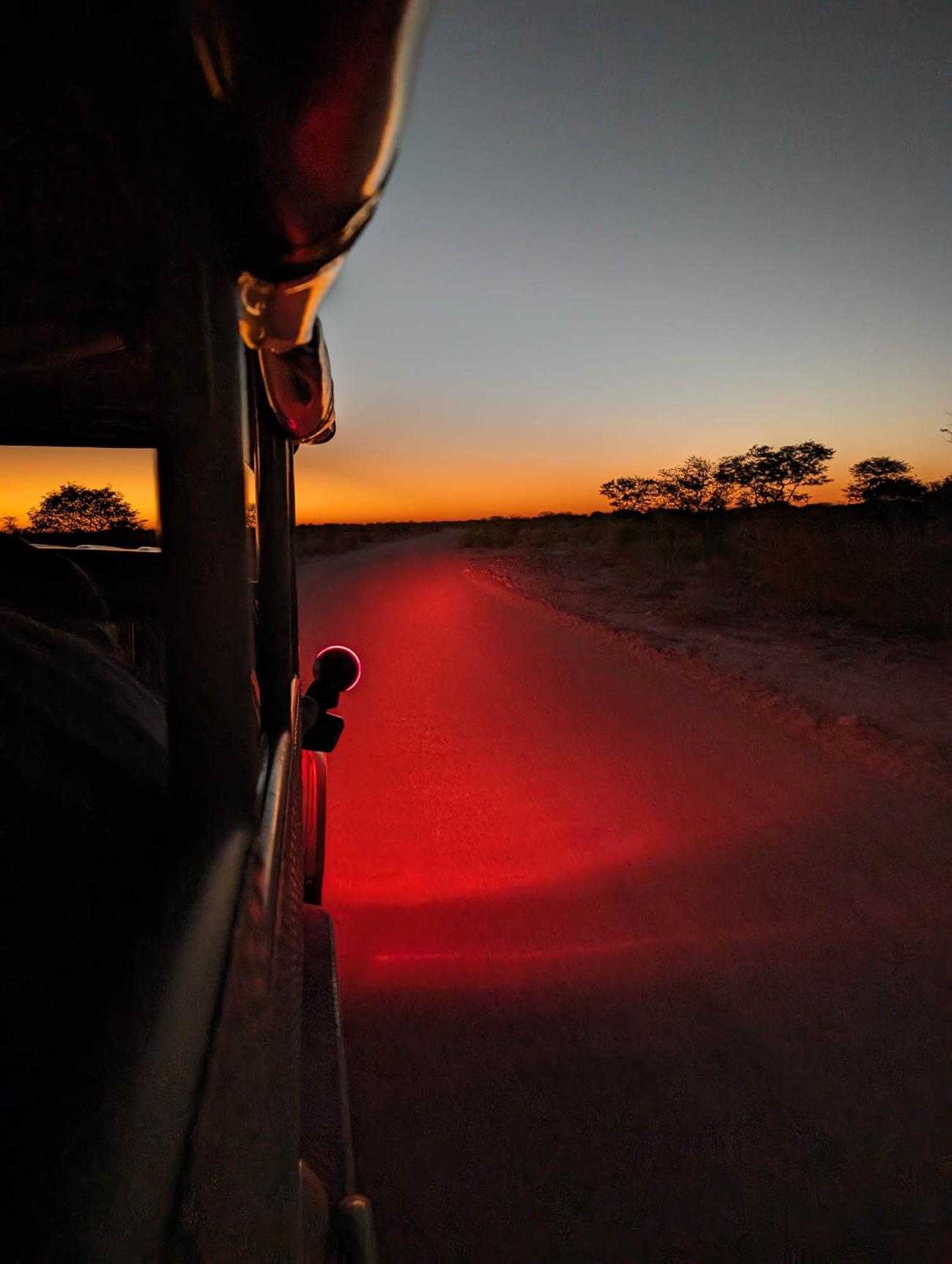
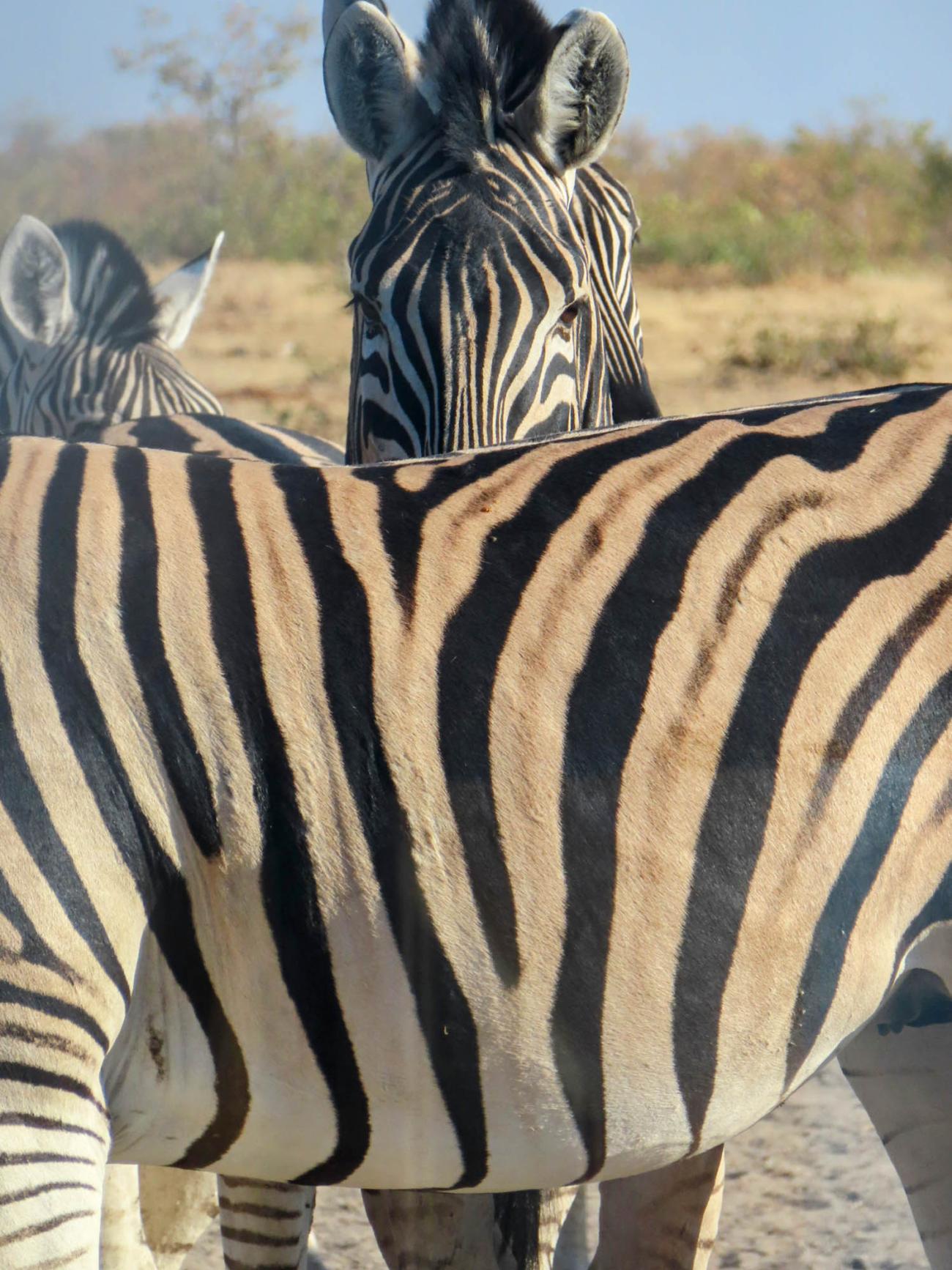
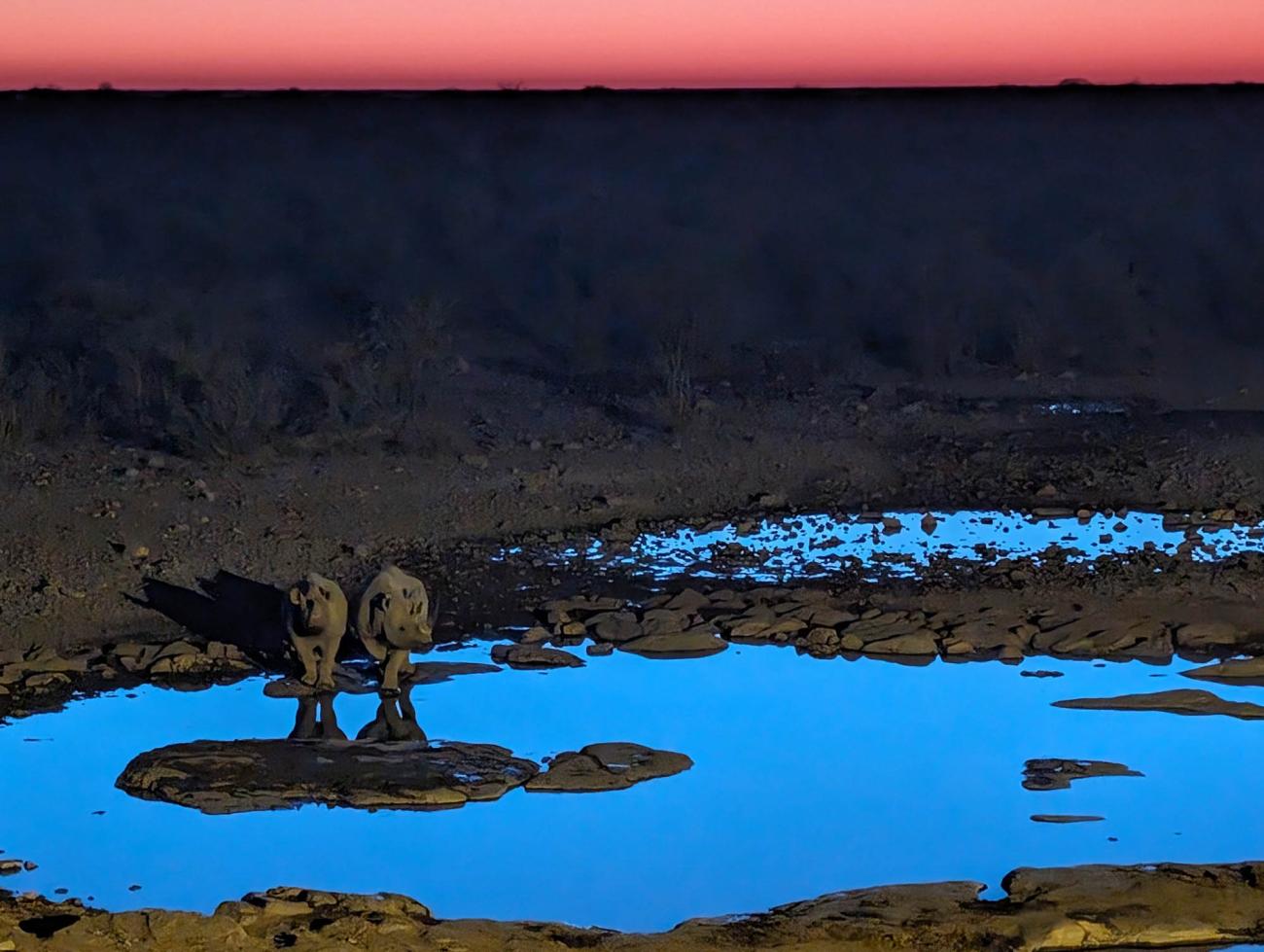
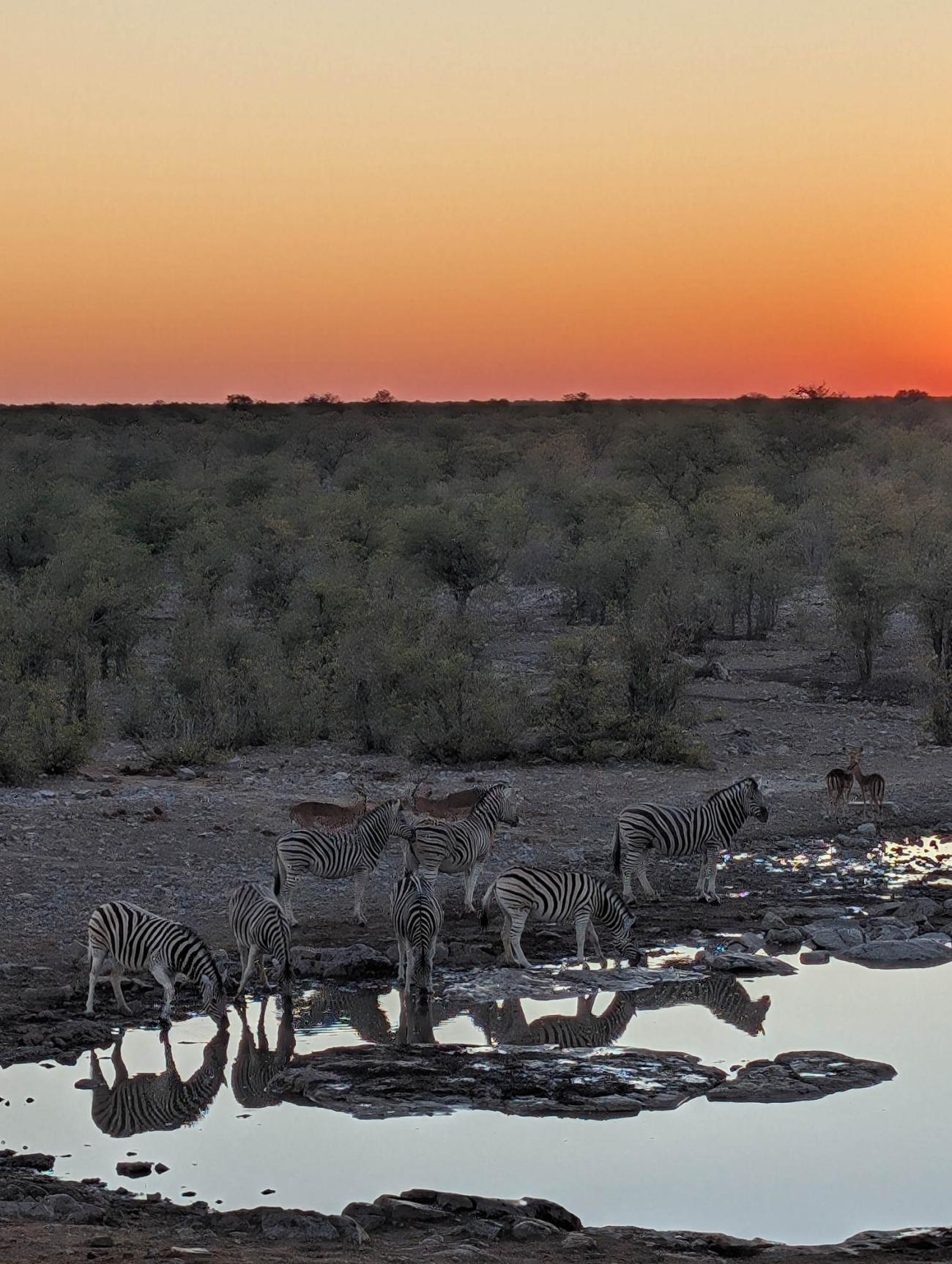
Some of the best wildlife spotting experiences were actually at the floodlit watering hole at our accommodation where we witnessed huge herds of zebra and antelope flocking to visit. Any disappointment we had not to see any of the big cats during our visit was tempered by an amazing sighting of a group of five black rhinos, accompanied by a few hyenas, visiting one evening.
Namibia currently boasts the largest population of black rhinos in the world and figures show that those numbers are increasing within the park, partly due to successful breeding programmes. However, there has been a worrying and tragic surge in rhino poaching in 2024, demonstrating the need for a continuing focus on conservation efforts to ensure the ongoing survival of this critically endangered species.
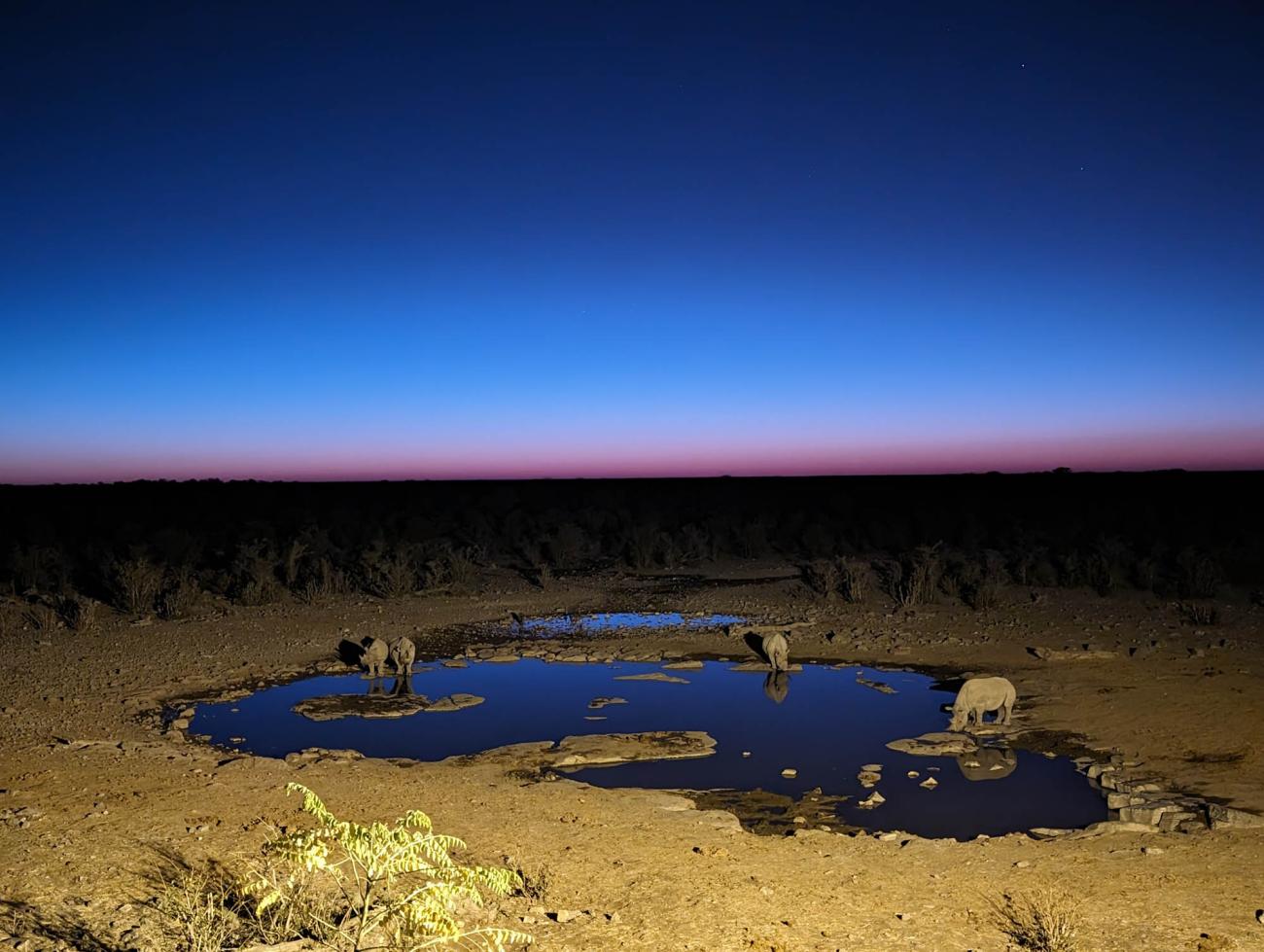
Iconic landscapes
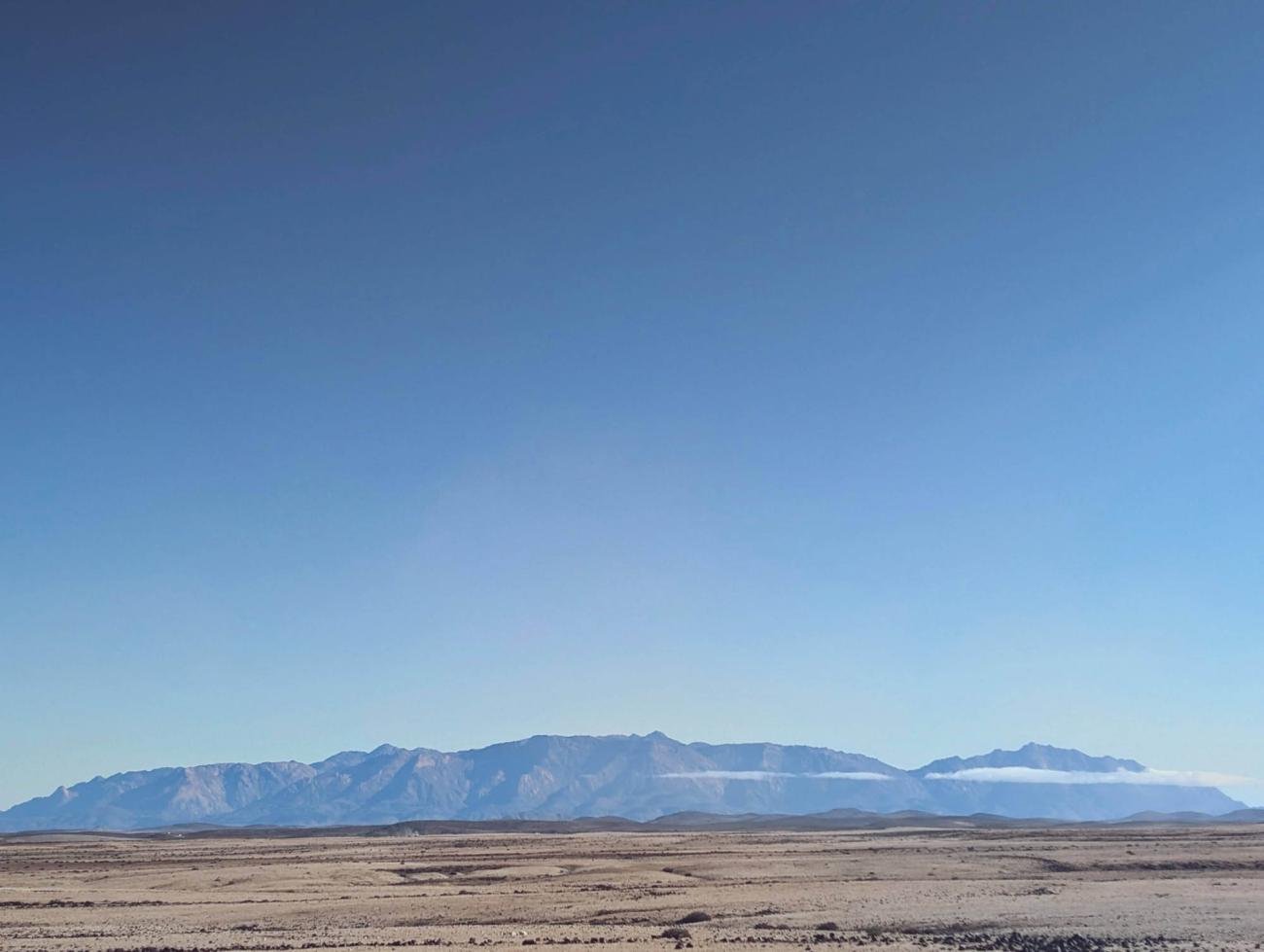
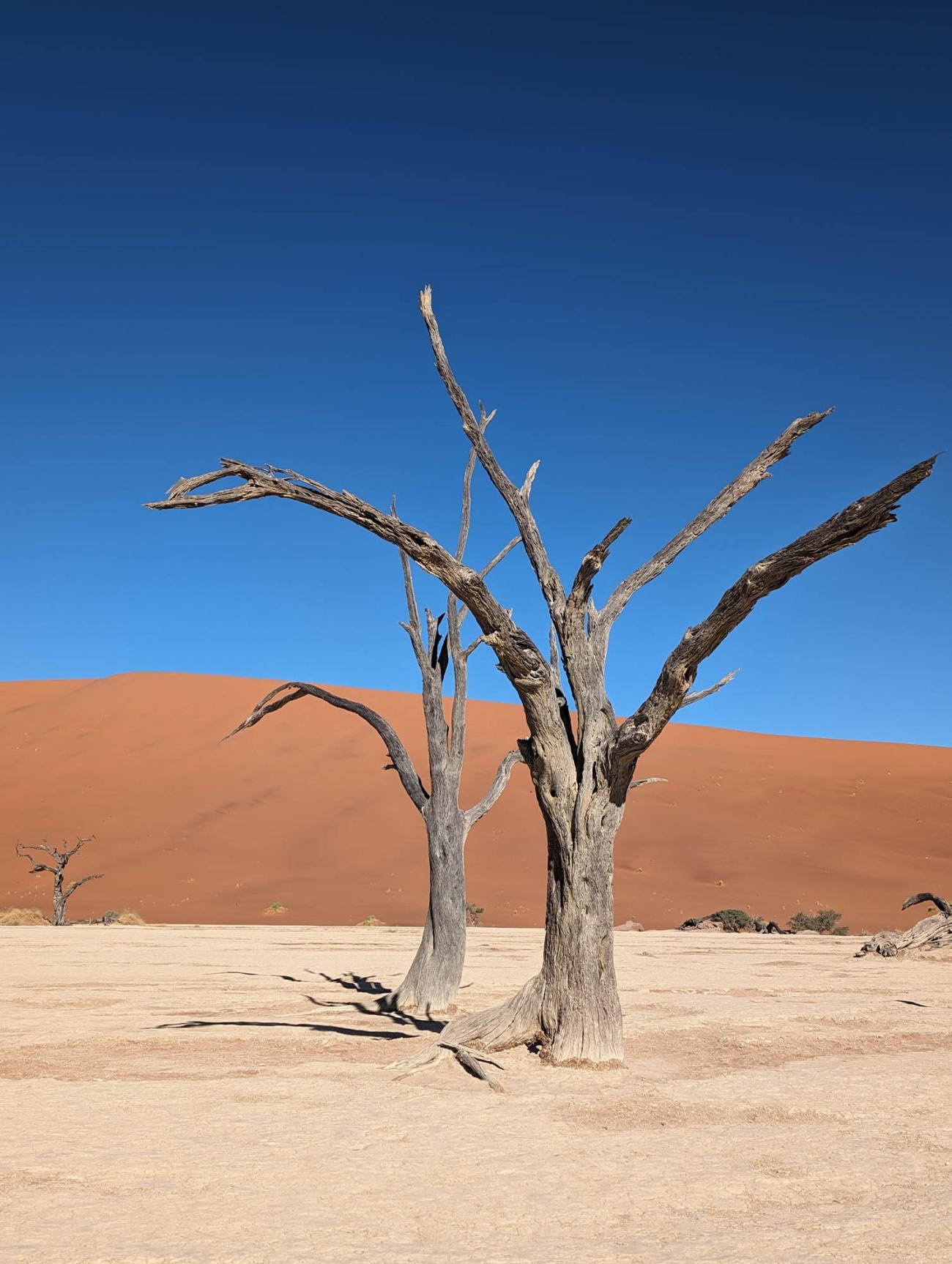
The red dunes of the Namib-Naukluft National Park are arguably the most iconic landscapes of Namibia. Our visit began with a very early alarm to reach the park gates for opening time. The first stop was at Dune 45 for an opportunity to climb its slopes before the heat of the day. It’s not an easy walk, with the sand making it difficult underfoot, but it was worth the effort to enjoy the stunning views of the rolling dunes and vibrant colours of the surrounding landscape from the top.
To reach our next stop of Deadvlei required us to take a (very bumpy!) jeep drive further into the park and from here walk around 20 minutes to visit the dried-up clay pan of Deadvlei. The dark dried-up camel thorn trees, white parched ground, surrounding red dunes and bright blue skies provided lots of opportunities for dramatic landscape photography.
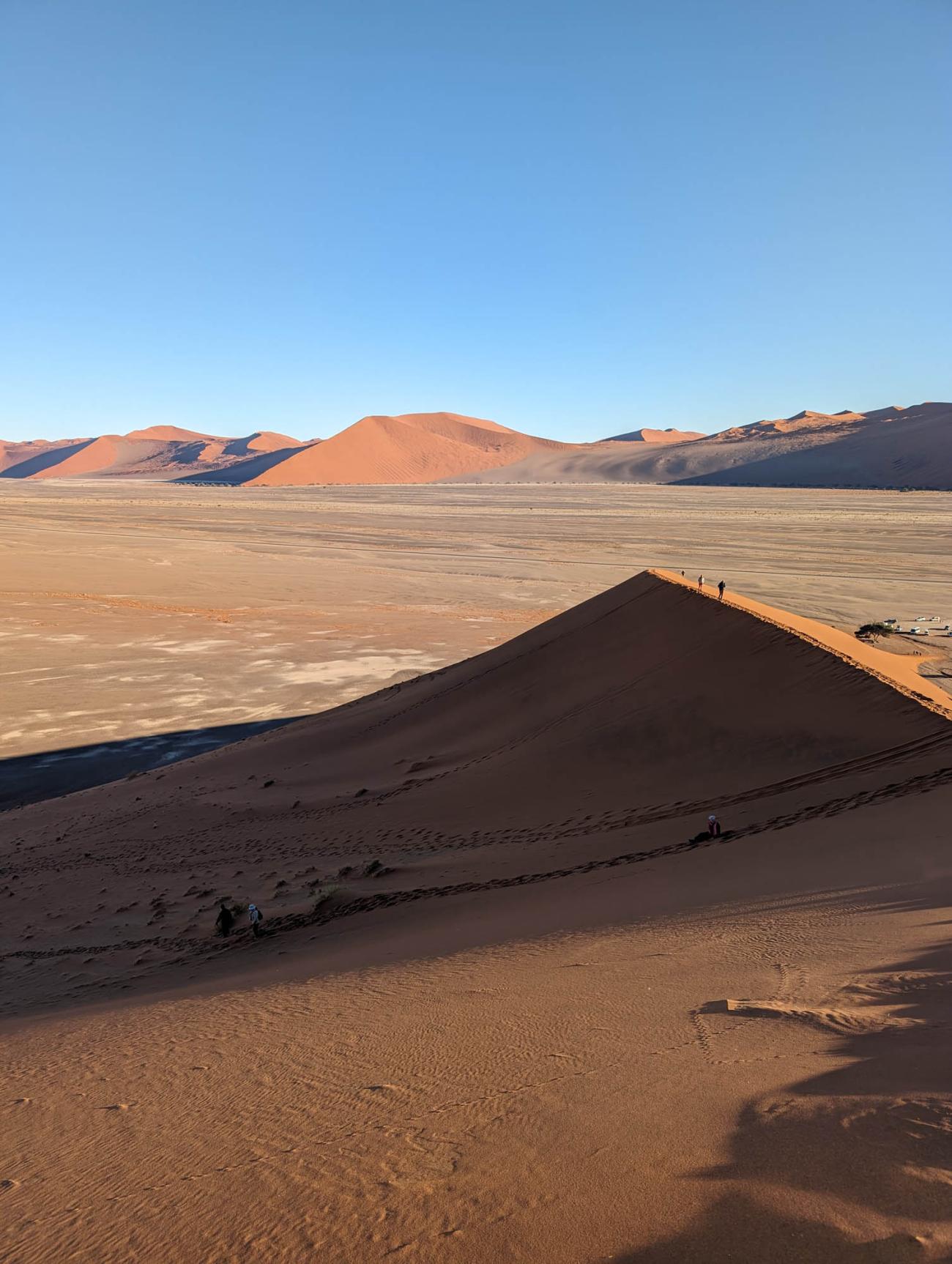
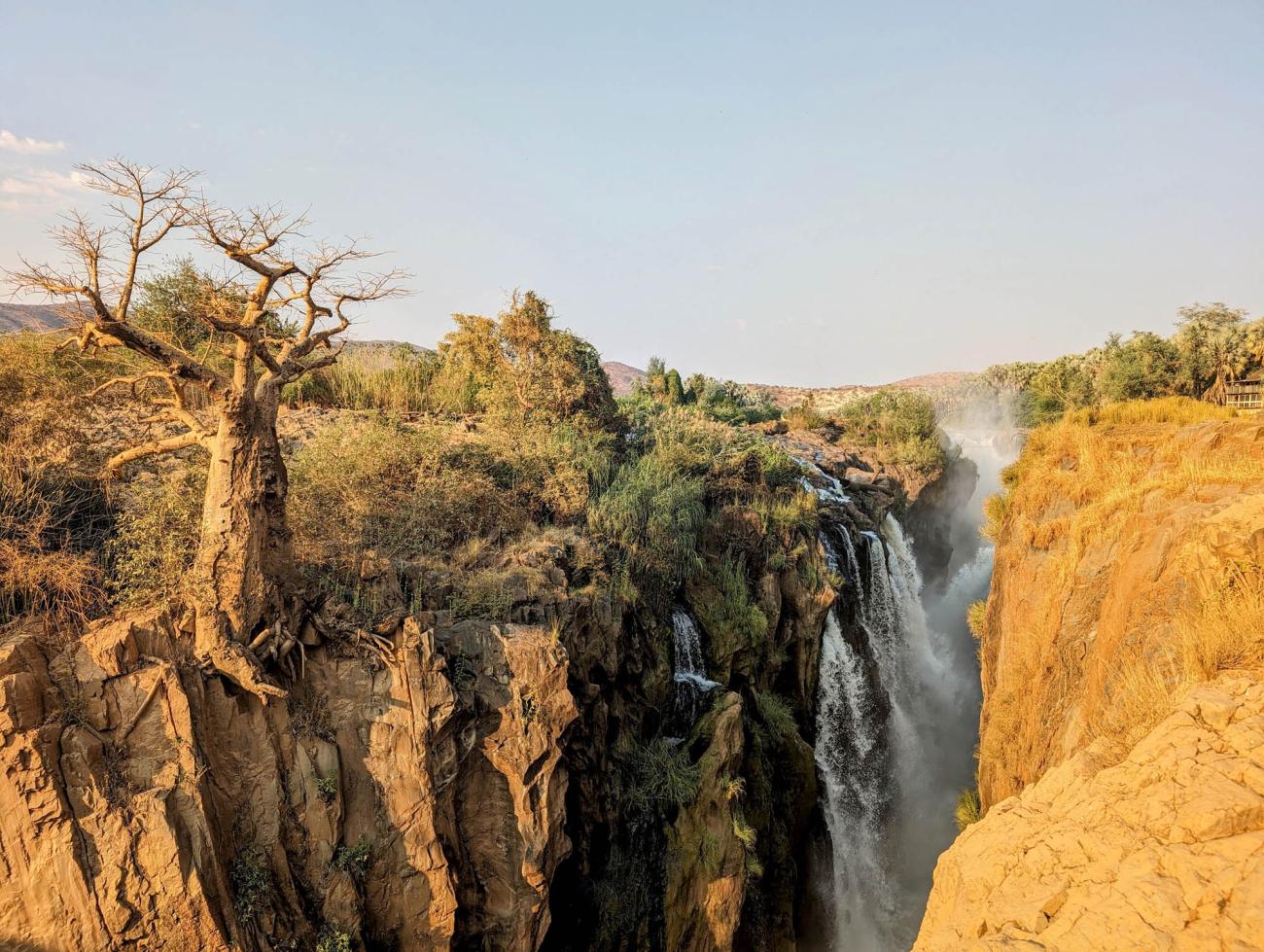
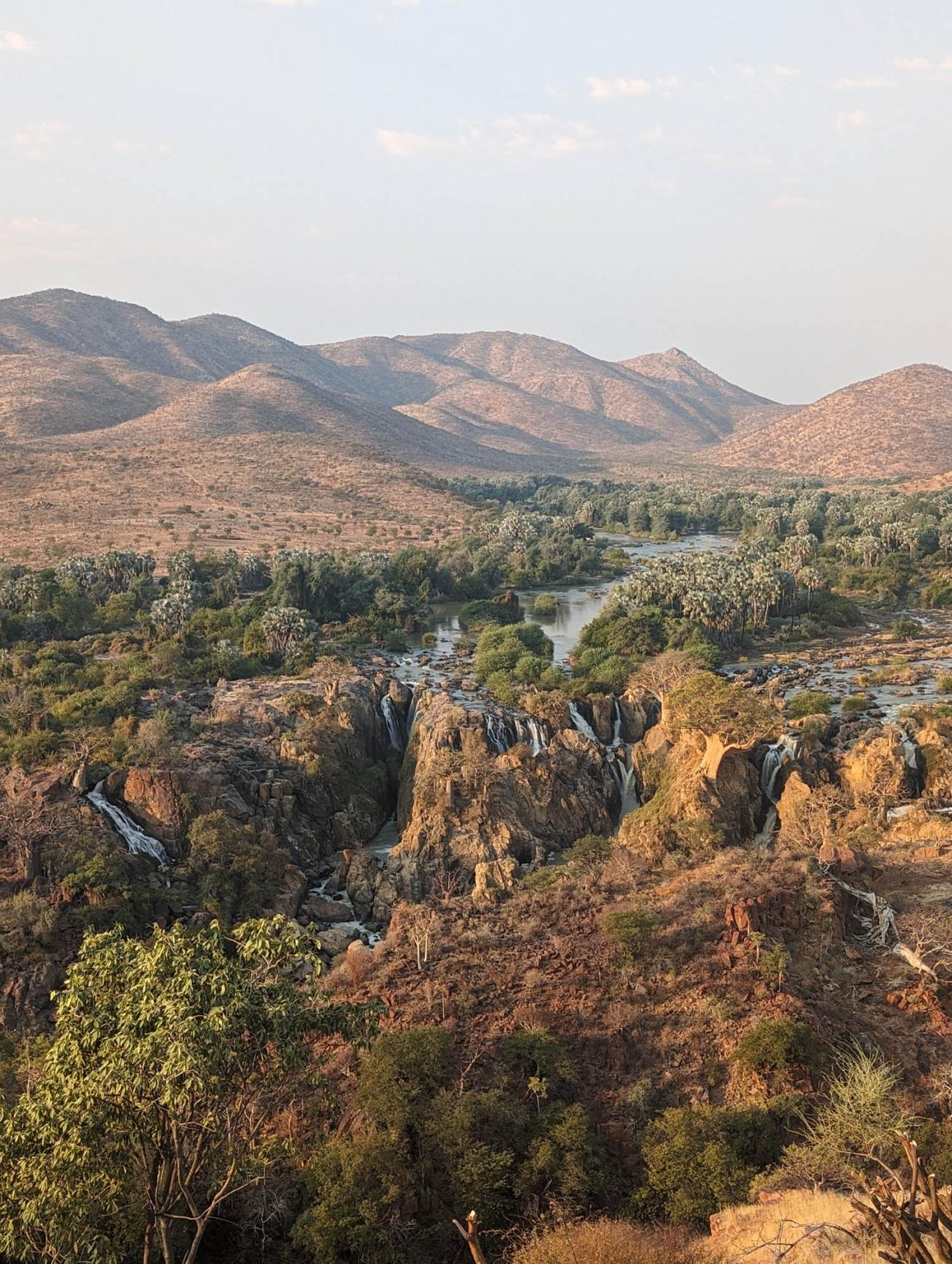
A less well-known and visited landscape, but a highlight of the trip for me was Epupa Falls. Situated in the far north of the country on the Angolan border, the falls were far more spectacular than I expected. It’s a long journey north, but those who take the time and effort to
journey off the beaten path to this region are rewarded handsomely. After some time to settle into the charming tented rooms at our riverside camp, we then headed out in a jeep to a stunning viewpoint to watch the sunset over the falls. The peaceful Kunene River separates Namibia and Angola and cuts through the surrounding desert landscapes, creating a lush oasis along its banks. We watched as the landscape and sky changed colour with the setting of the sun – accompanied by a G&T of course!
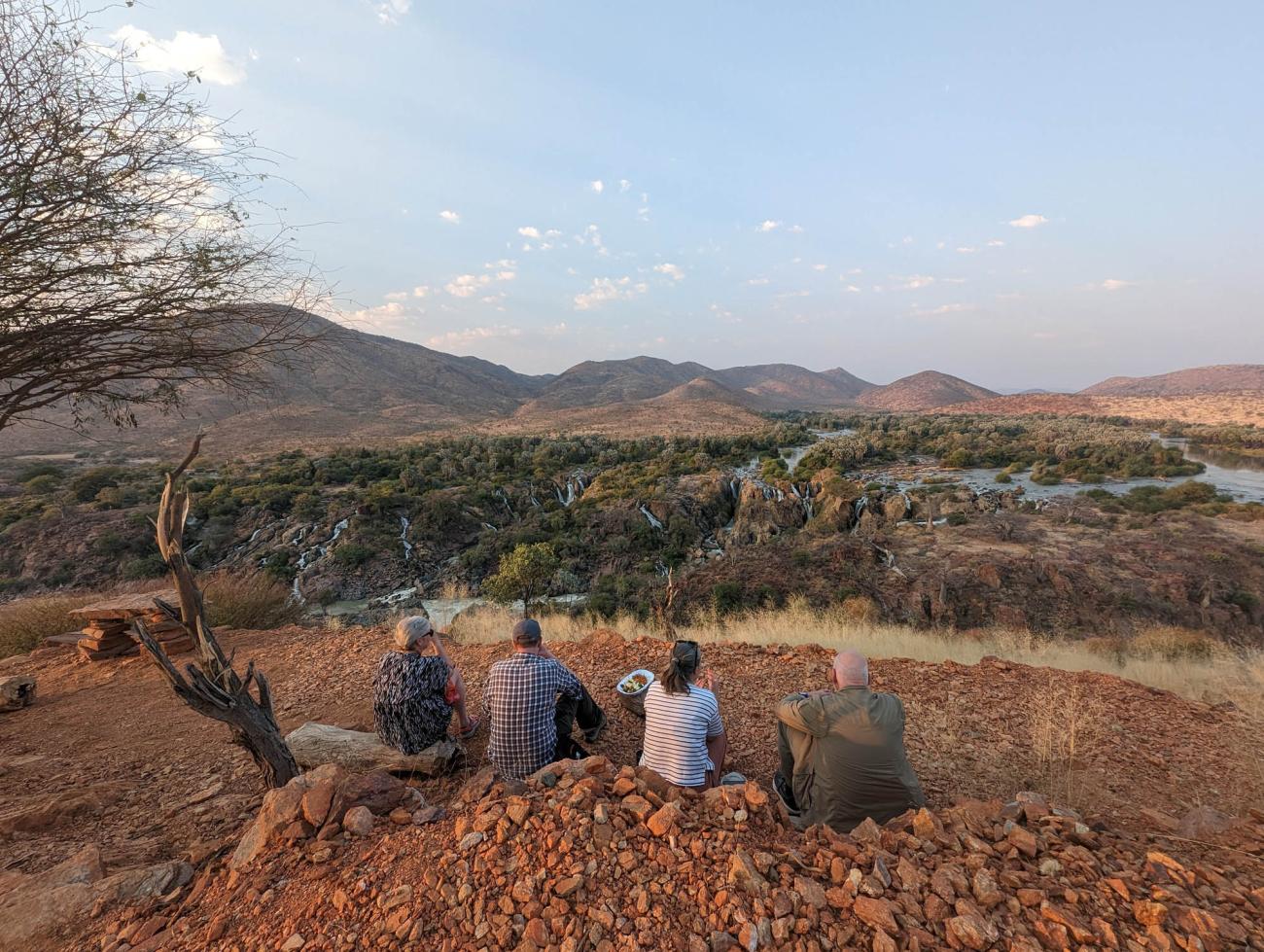
Cultural experiences
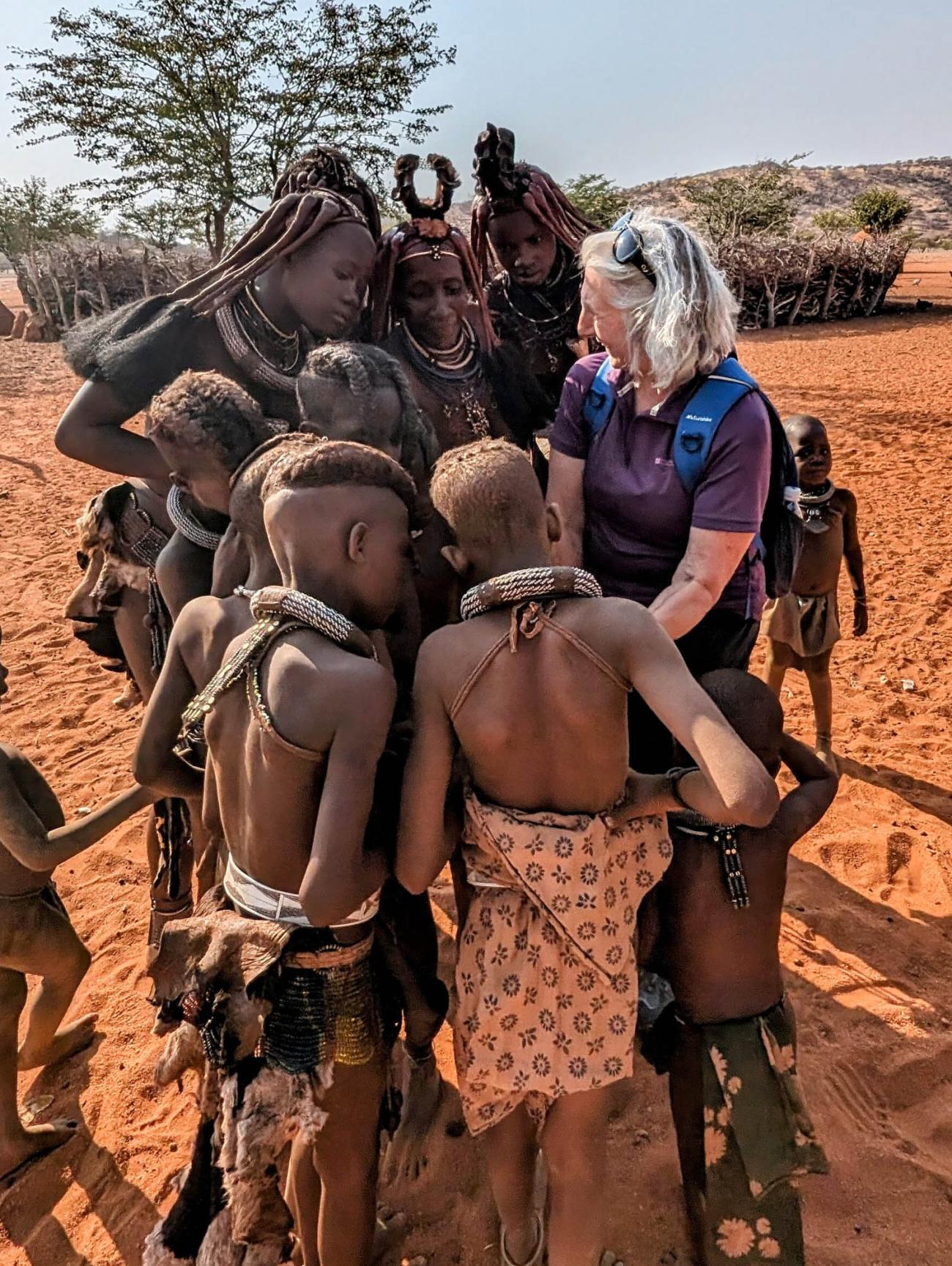
It was from Epupa Falls that we visited a local Himba settlement, facilitated sensitively by our Himba guide who worked at our lodge. After seeking and getting agreement with the head of the village and a short briefing we were invited into the village to find out more about their daily lives, dress, traditions, houses and culture.
The Himba are an ethnic group of an estimated 50,000 and traditionally live in northern Namibia and southern Angola. Their distinctive use of ochre pigment, which has both cosmetic as well as practical purposes of protecting the skin, makes them visually very distinctive.
The settlement we visit, as is traditional, is set out in a circular layout, with huts for living and working surrounding the kraal for livestock and an okuruwo – the sacred ancestral fire which is kept burning at all times to connect with and ensures protection from the ancestors.
We learnt about the significance of hairstyles, clothing and jewellery and how they represent significant milestones in adolescence and adulthood. There were opportunities for us all to ask questions of each other, and of course, the visit was finished with some singing and dancing.
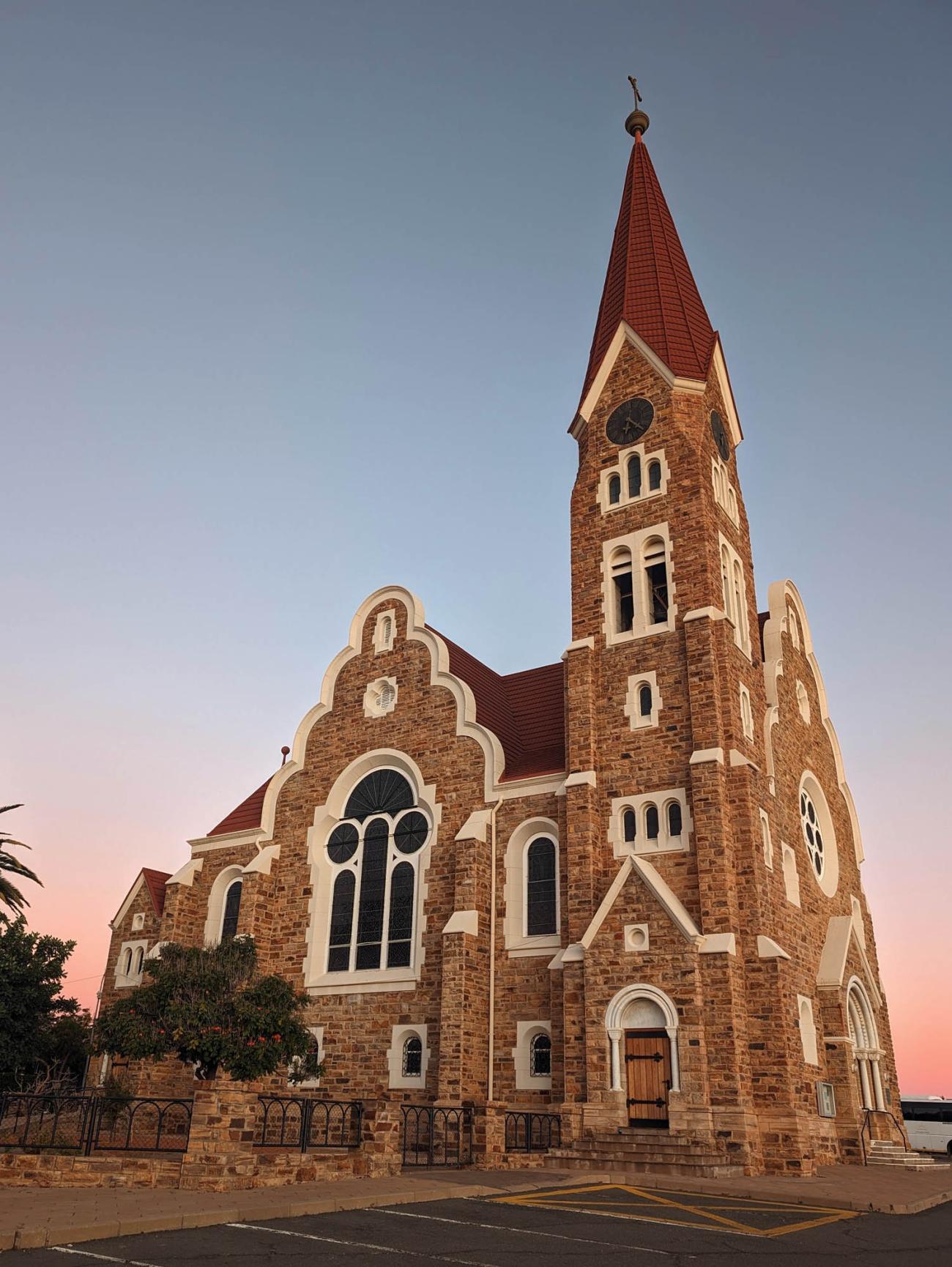
We got to see so much on this incredible tour and we had many wonderful experiences, making it difficult to pick just a few highlights.
In addition to the above, I really enjoyed our time in Swakopmund – a colourful and quirky town with clear German architectural influences and great for spending some time relaxing and wandering the streets. As the ‘adventure capital’ of Namibia, there are also lots of additional activities and excursions on offer here for anyone who wants to keep busy!
I also loved spending time at our hotels and lodges, most of which had swimming pools, and of course, comfortable rooms, friendly staff and characterful communal spaces, as well as stunning views across the surrounding landscapes.
I hope it won’t be another 13 years before I can return!
